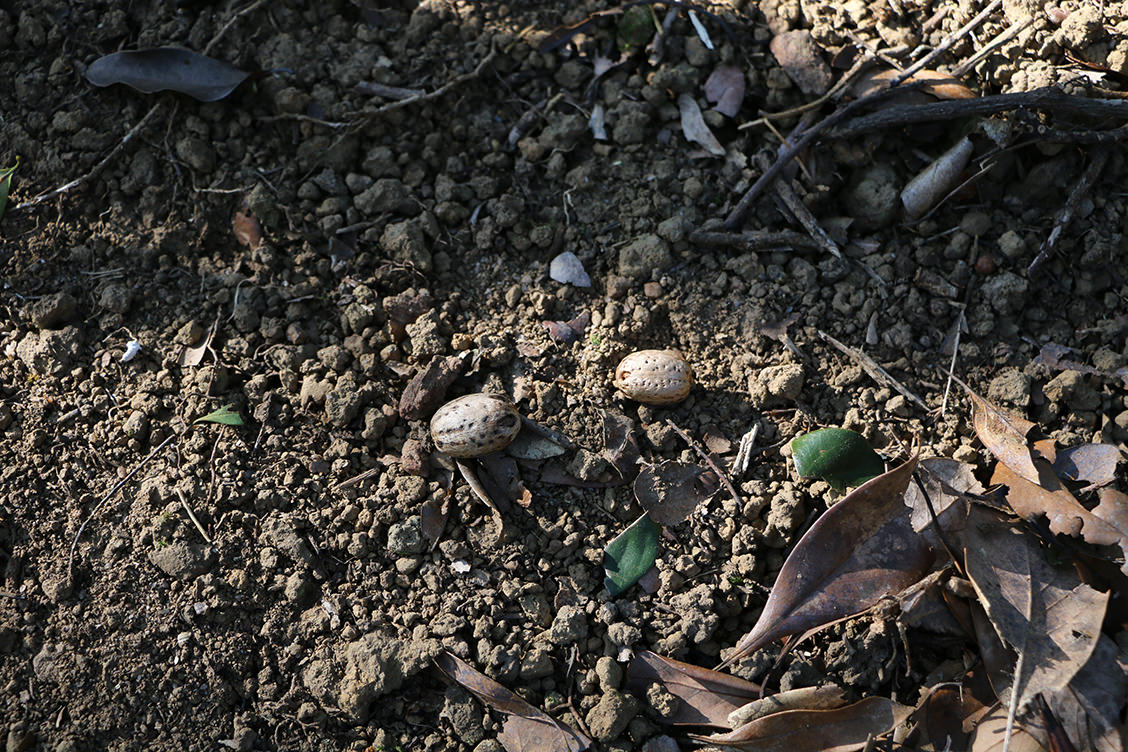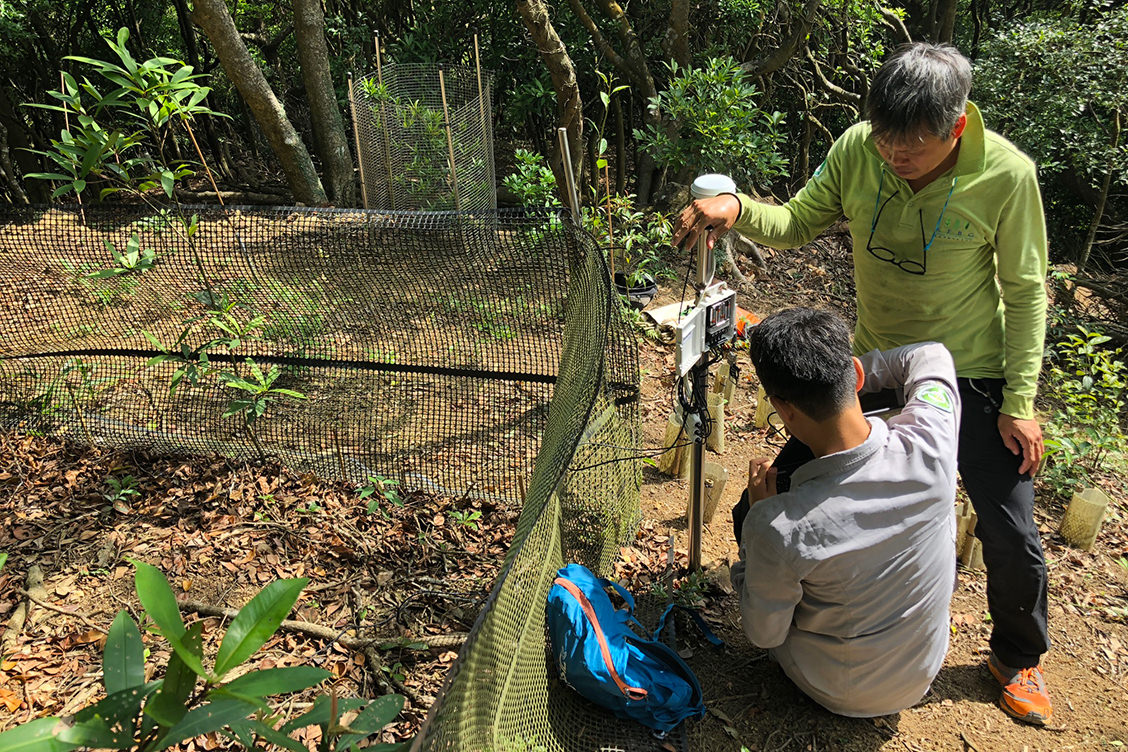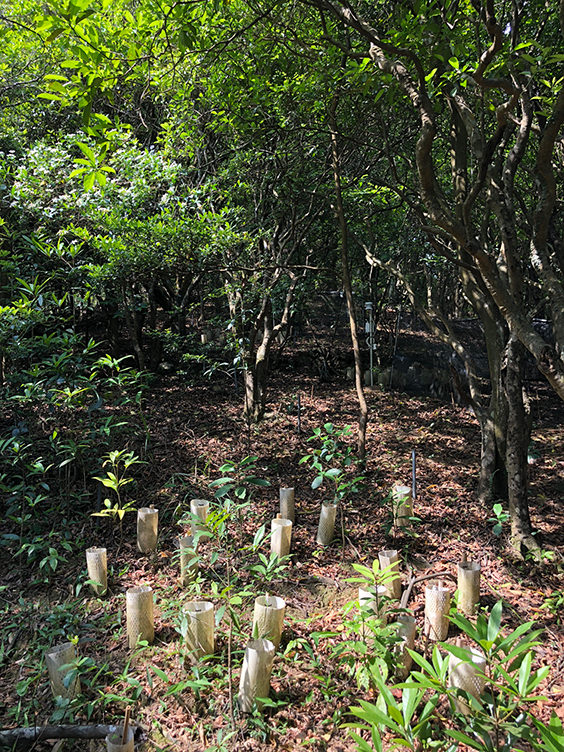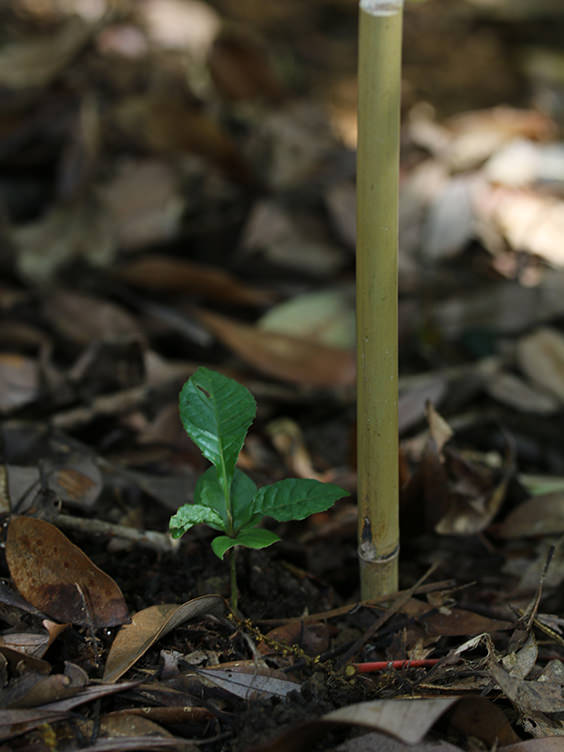
Forest accounts for approximately 25% of Hong Kong’s land area, but practically all of this is relatively recent secondary growth that has regenerated following decimation of the original vegetation throughout the region’s history of human settlement. These secondary forests are typically dominated by just one or very few pioneer tree species that make up a very even, single-layered canopy. Moreover, few tree seedlings can be found on the forest floor, reflecting a decidedly slow natural rate of regeneration and suggesting that the process of forest succession towards a more variable forest structure is ailing or has perhaps even stalled.
Natural regeneration of later succession tree species can be limited by a lack of seed dispersal. Although Hong Kong has a relatively rich tree flora of more than 300 species, many of these species are today confined to fengshui woodlands or to the small pockets of remnant original forest that survives only in the remotest mountain ravines. The availability of seed sources at the landscape level is correspondingly poor and this, combined with a severely depleted pool of dispersal agents (such as birds and mammals), casts a cloud over the future course of forest succession in Hong Kong.


A more proactive approach to forest restoration has been suggested as a necessary means of recuperating lost species richness and to accelerate the succession process. One such approach is enrichment planting using nursery-raised tree seedlings, but this is both labour- and capital-intensive. One potential alternative is ‘direct seeding’, which may take the form of either burial seeding or broadcast seeding. In practice, burial seeding is more often applied in restoration programmes than broadcast seeding. Although seed burial can improve germination and establishment rates, broadcast seeding conveys the advantages of covering a larger area and reaching even remote and inaccessible terrain. Given Hong Kong’s extremely rugged topography, broadcast seeding would therefore seem to be the more appropriate form of enrichment planting. Furthermore, broadcast seeding may be considered ‘more direct’ than burial seeding, inasmuch as it better mimics the process of seed dispersal and establishment under natural conditions, and its application may therefore shed some light on the reasons for the failure of natural succession in Hong Kong’s secondary forests.
Little is known about the efficacy of direct seeding in tropical secondary forests. In order to derive a scientifically informed framework for the application of direct seeding approaches in Hong Kong and the wider region, KFBG has embarked on a study to test the performance of various native tree species. In 2016, ten plots were established in secondary forest that has regenerated naturally over the past 70 years on our hillside. From January 2016 to December 2019, seeds of 17 native tree species have been sown in these plots. The rate of seed germination is monitored monthly and weather data is continuously recorded. The experiment is ongoing, with the intention of writing up our findings in due course.


